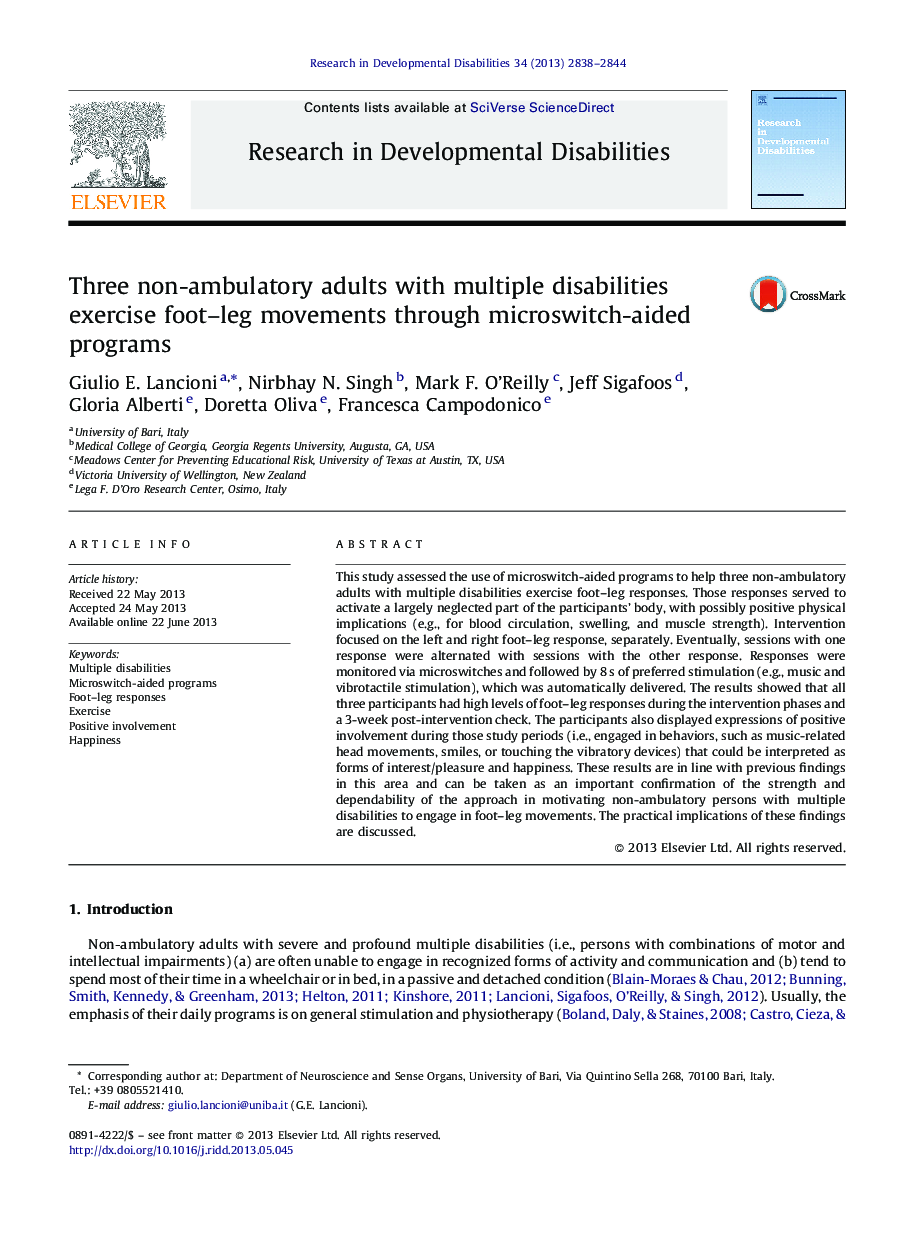| Article ID | Journal | Published Year | Pages | File Type |
|---|---|---|---|---|
| 10317771 | Research in Developmental Disabilities | 2013 | 7 Pages |
Abstract
This study assessed the use of microswitch-aided programs to help three non-ambulatory adults with multiple disabilities exercise foot-leg responses. Those responses served to activate a largely neglected part of the participants' body, with possibly positive physical implications (e.g., for blood circulation, swelling, and muscle strength). Intervention focused on the left and right foot-leg response, separately. Eventually, sessions with one response were alternated with sessions with the other response. Responses were monitored via microswitches and followed by 8Â s of preferred stimulation (e.g., music and vibrotactile stimulation), which was automatically delivered. The results showed that all three participants had high levels of foot-leg responses during the intervention phases and a 3-week post-intervention check. The participants also displayed expressions of positive involvement during those study periods (i.e., engaged in behaviors, such as music-related head movements, smiles, or touching the vibratory devices) that could be interpreted as forms of interest/pleasure and happiness. These results are in line with previous findings in this area and can be taken as an important confirmation of the strength and dependability of the approach in motivating non-ambulatory persons with multiple disabilities to engage in foot-leg movements. The practical implications of these findings are discussed.
Related Topics
Life Sciences
Neuroscience
Behavioral Neuroscience
Authors
Giulio E. Lancioni, Nirbhay N. Singh, Mark F. O'Reilly, Jeff Sigafoos, Gloria Alberti, Doretta Oliva, Francesca Campodonico,
